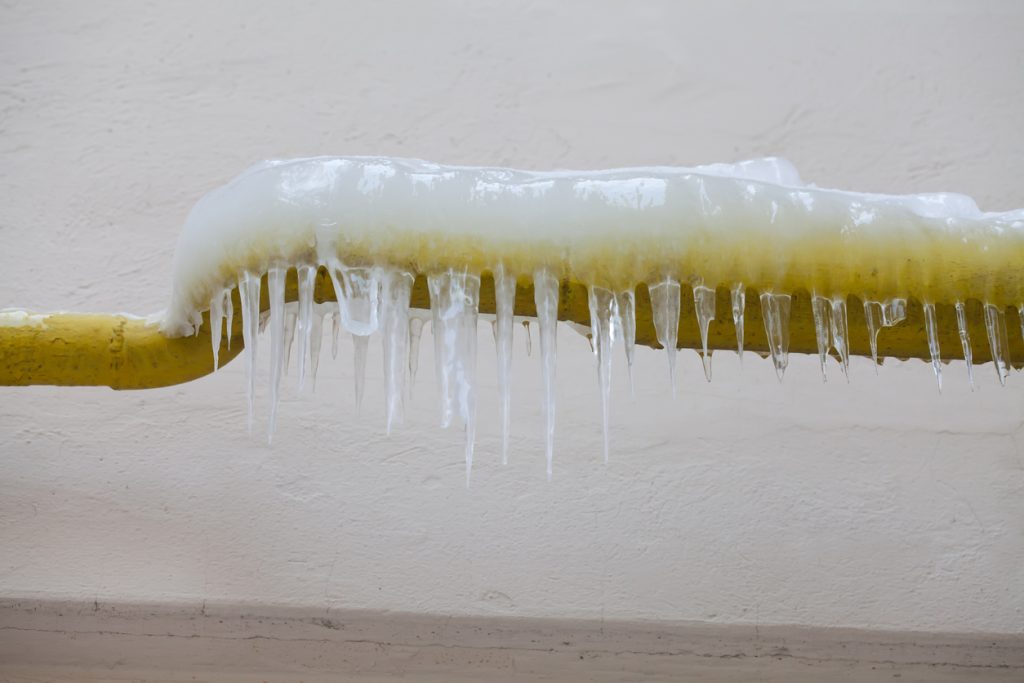Prevent Frozen Plumbing in Cold Weather: Professional Tips
Prevent Frozen Plumbing in Cold Weather: Professional Tips
Blog Article
The content following next pertaining to Prevent Frozen Pipes is truly enjoyable. You should give it a look.

Cold weather can wreak havoc on your plumbing, specifically by freezing pipelines. Here's just how to avoid it from occurring and what to do if it does.
Introduction
As temperatures decline, the risk of frozen pipelines rises, potentially leading to expensive repair work and water damages. Comprehending just how to stop frozen pipes is important for homeowners in cold environments.
Prevention Tips
Protecting prone pipes
Cover pipelines in insulation sleeves or utilize heat tape to safeguard them from freezing temperature levels. Concentrate on pipelines in unheated or external locations of the home.
Heating techniques
Maintain interior spaces adequately warmed, especially locations with plumbing. Open cupboard doors to enable warm air to circulate around pipes under sinks.
Exactly how to recognize frozen pipes
Try to find decreased water circulation from taps, unusual smells or noises from pipelines, and visible frost on exposed pipes.
Long-Term Solutions
Architectural modifications
Consider rerouting pipelines away from exterior wall surfaces or unheated areas. Add additional insulation to attic rooms, basements, and crawl spaces.
Upgrading insulation
Purchase premium insulation for pipelines, attics, and wall surfaces. Correct insulation helps keep regular temperatures and decreases the threat of icy pipelines.
Protecting Outdoor Plumbing
Garden tubes and outdoor taps
Separate and drain pipes yard pipes before winter season. Install frost-proof spigots or cover exterior taps with insulated caps.
Comprehending Icy Pipes
What creates pipelines to freeze?
Pipelines ice up when exposed to temperatures listed below 32 ° F (0 ° C) for extended durations. As water inside the pipes freezes, it broadens, taxing the pipe wall surfaces and possibly creating them to break.
Risks and problems
Frozen pipes can lead to supply of water disruptions, building damages, and pricey repairs. Ruptured pipes can flood homes and trigger considerable structural damages.
Indicators of Frozen Pipes
Determining frozen pipes early can prevent them from rupturing.
What to Do If Your Pipes Freeze
Immediate activities to take
If you think icy pipes, keep taps open up to relieve pressure as the ice thaws. Use a hairdryer or towels soaked in warm water to thaw pipes gradually.
Conclusion
Avoiding frozen pipes needs aggressive procedures and quick reactions. By comprehending the causes, signs, and preventive measures, home owners can shield their pipes throughout cold weather.
6 Proven Ways to Prevent Frozen Pipes and Protect Your Home
Disconnect and Drain Garden Hoses
Before winter arrives, start by disconnecting your garden hoses and draining any remaining water. Close the shut-off valves that supply outdoor hose bibs and leave the outdoor faucet open to allow any residual water to drain. For extra protection, consider using faucet covers throughout the colder months. It’s also important to drain water from any sprinkler supply lines following the manufacturer’s directions.
Insulate Exposed Pipes
Insulating your pipes is an effective way to prevent freezing. Pipe insulation is readily available at home improvement stores and is relatively inexpensive. Pay close attention to pipes in unheated areas such as the attic, basement, crawl spaces, or garage. Apply foam insulation generously to create a buffer against the cold. You can also wrap your pipes in heat tape or thermostat-controlled heat cables for added warmth.
Seal Air Leaks
Inspect your home for any cracks or openings that could let in cold air. Seal any holes around the piping in interior or exterior walls, as well as the sill plates where your home rests on its foundation. Additionally, make sure to keep your garage door closed unless you’re entering or exiting. Leaving it open creates a significant air leak that can lead to frozen pipes.
Allow Warm Air Circulation
During cold snaps, it’s essential to allow warm air to circulate evenly throughout your home. Leave interior doors ajar to promote better airflow. Open kitchen and bathroom cabinets to help distribute heat consistently around the rooms. If you have small children or pets, be sure to remove any household chemicals or potentially harmful cleaners from open cabinets for safety.
Let Faucets Drip
A small trickle of water can make a big difference in preventing ice formation inside your pipes. When temperatures drop significantly, start a drip of water from all faucets served by exposed pipes. This continuous flow helps prevent the water from freezing. Additionally, running a few faucets slightly can relieve pressure inside the pipes, reducing the chances of a rupture if the water inside does freeze.
https://choateshvac.com/6-proven-ways-to-prevent-frozen-pipes-and-protect-your-home/

I recently found that blog entry about How to prepare your home plumbing for winter weather when doing a lookup on the search engines. Liked our post? Please quickly share it. Let other people discover it. We treasure your readership.
Visit Url Report this page